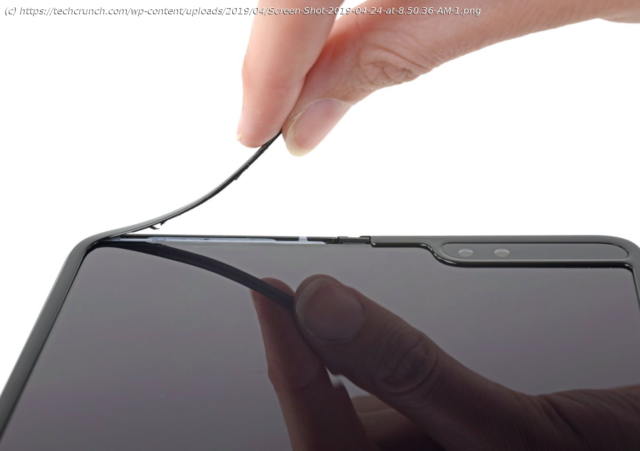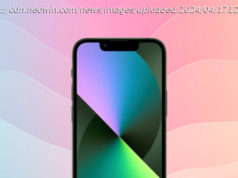The Galaxy Fold has been the most polarizing product I can recall having reviewed. Everyone who saw it wanted to play with the long-promised smartphone paradigm shift. The results, on the other hand, were far more mixed. If nothing else, the Fold has a remarkably high Q-Rating. Each person who saw me using the product […]
The Galaxy Fold has been the most polarizing product I can recall having reviewed. Everyone who saw it wanted to play with the long-promised smartphone paradigm shift. The results, on the other hand, were far more mixed.
If nothing else, the Fold has a remarkably high Q-Rating. Each person who saw me using the product had at least a vague idea of what it was all about. I honestly can’t remember the last time I’ve had that reaction with a non-iPhone device. That’s great from brand perspective. It means a lot of people are curious and potentially open to the notion that the Samsung Galaxy Fold is the future.
Of course, it also means there are a lot of people looking on if you fail.
In some ways, this past week with the Samsung Galaxy Fold has been an extremely public beta. A handful of samples were given out to reviewers. Most worked fine (mine included), but at least three failed. It’s what we in the industry call a “PR nightmare.” Or at least it would be for most companies.
Samsung’s weathered larger storms — most notably with the Galaxy Note 7 a few years back. Of course, that device made it much further along, ultimately resulting in two large-scale recalls. The nature of the two issues was also vastly different. A malfunctioning screen doesn’t put the user at bodily risk like an exploding battery. The optics on these things don’t get much worse than having your smartphone banned from planes.
As of this writing, the Fold is still set to go on sale, most likely this year. To be perfectly frank, the April 26 release date seemed overly optimistic well before the first reports of malfunctioning units. It’s never a great sign when a device is announced in February and is only made available for review a few weeks ahead of launch. It’s kind of like when a studio doesn’t let reviewers watch a film before release. It doesn’t necessarily mean it’s bad, but it’s something to keep an eye on.
That’s the thing. The Galaxy Fold is the kind of device you want badly to succeed. You want it to be great and you want Samsung to sell a billion because it’s a genuinely exciting product after a decade of phones that look mostly the same. There’s also the fact that Samsung has essentially been hyping this thing for eight years, since it debuted a flexible display at CES 2011.
In spite of that, however, the home stretch feels rushed. Samsung no doubt saw the writing on the wall, as companies like Huawei readied their own foldable. And while Royole beat the fold to market, Samsung still had a very good shot at the claim of first commercially viable foldable on the market, with a decade of Galaxy devices under its belt and hand-in-hand work with the Google team to create an Android UX that makes sense on a pair of very different screens.
[Source: iFixit]
But this iFixit teardown speaks volumes. “Alarmingly” isn’t the kind of word you want/expect to hear about a company like Samsung, but there it is, followed directly by “fragile” — itself repeated five times over the course of the write-up. iFixit’s findings match up pretty closely with Samsung’s own reports:
What makes all of this doubly unfortunate is that Samsung has about as much experience as anyone making a rugged phone that works. I feel confident that the company will do just that in future generations, but unless the company can come back with definitive evidence that it’s overhauled the product ahead of launch, this is a difficult product to recommend.
Samsung knew the first-gen Galaxy Fold would be a hard sell, of course. The company was pretty transparent about the fact that the experimental form factor, coupled with the $1,980 price tag, meant the device will only appeal to a small segment of early adopters.
Even so, the company managed to sell out of preorders — though it didn’t say how large that initial run was. Nor are we sure how many users have canceled in the wake of this past week’s events. Certainly no one would blame them for doing so at this point.
But while the apocalyptic shit-posters among us will declare the death of the foldable before it was ever truly born, whatever doesn’t kill Samsung has only made it stronger. And this misfire could ultimately do that for both the company and the category, courtesy of its informal beta testing.
Rewind a mere week or so ago (seriously, it’s only been that long), when we finally got our hands on the Galaxy Fold. I was impressed. And I certainly wasn’t alone. Admittedly, there’s a bit of a glow that first time you see a device that’s seemingly been teased forever. The fact that it exists feels like a kind of victory in and of itself. But the Fold does an admirable job marrying Samsung’s hardware expertise with a new form factor. And more importantly, it’s real and works as advertised — well, mostly, at least.
The truth is, I’ve mostly enjoyed my time with the Galaxy Fold. And indeed, it’s been fun chronicling it on a (nearly) daily basis. There are some things the form factor is great for — like looking at Google Maps or propping it up to watch YouTube videos on the elliptical machine at the gym.






